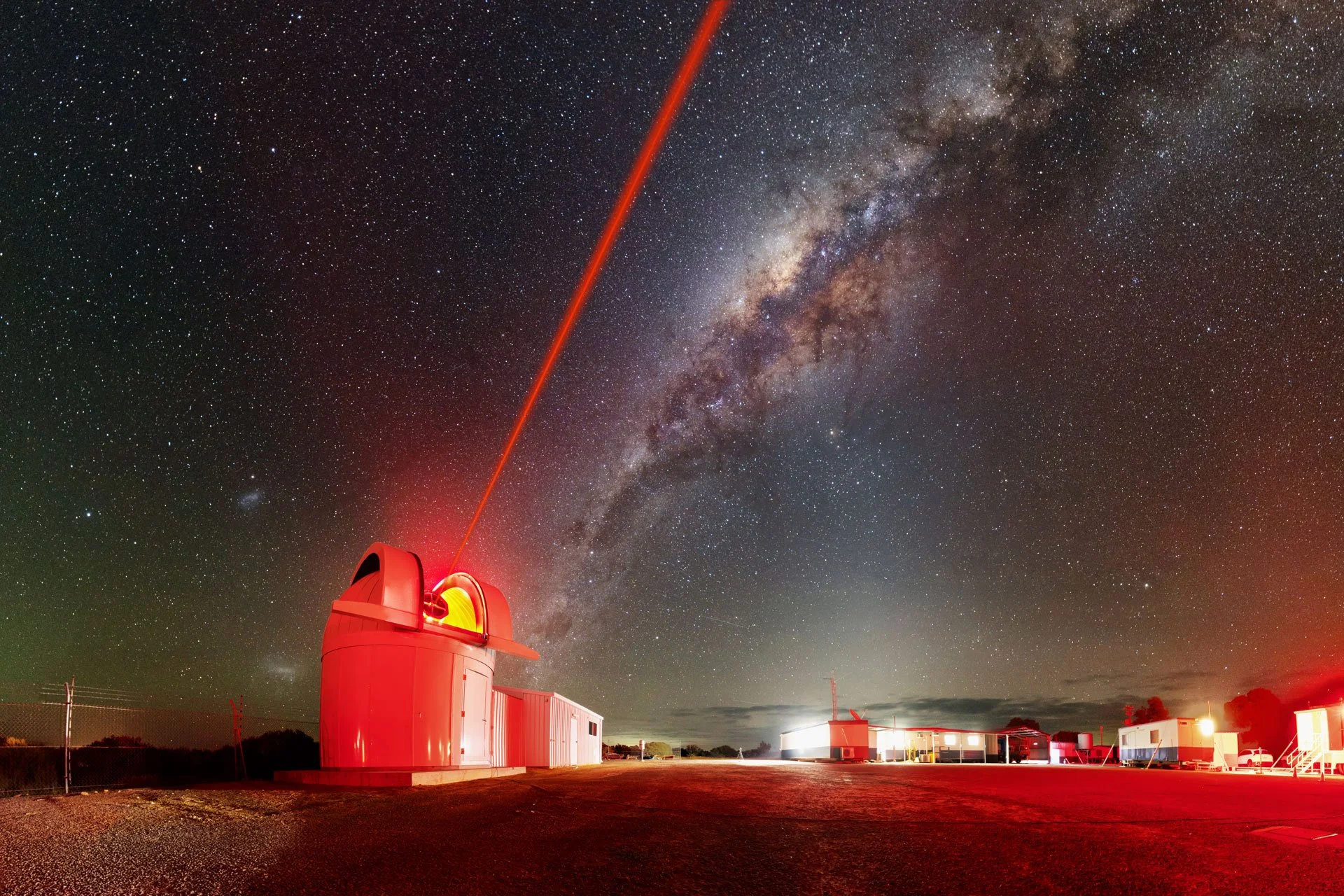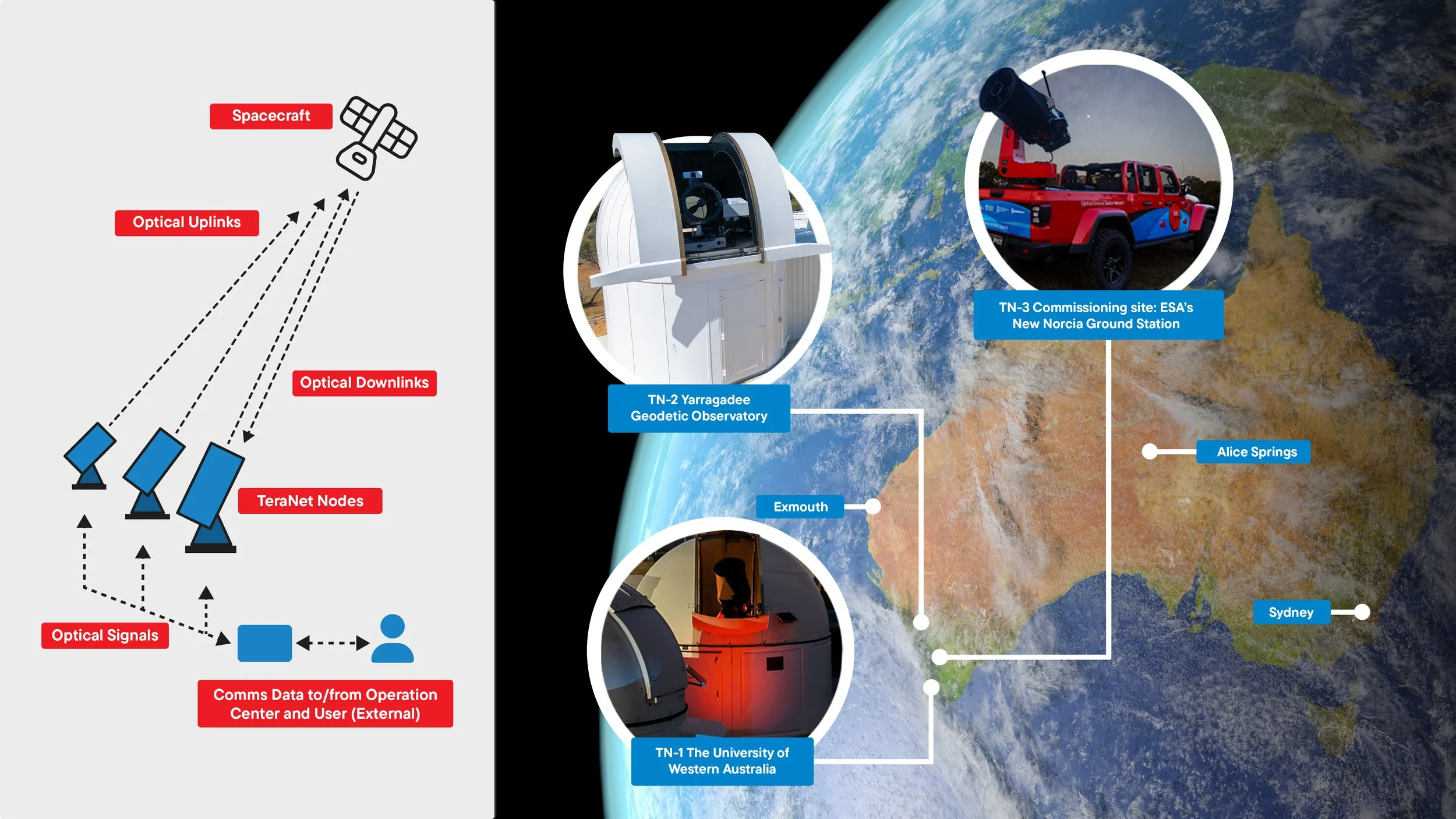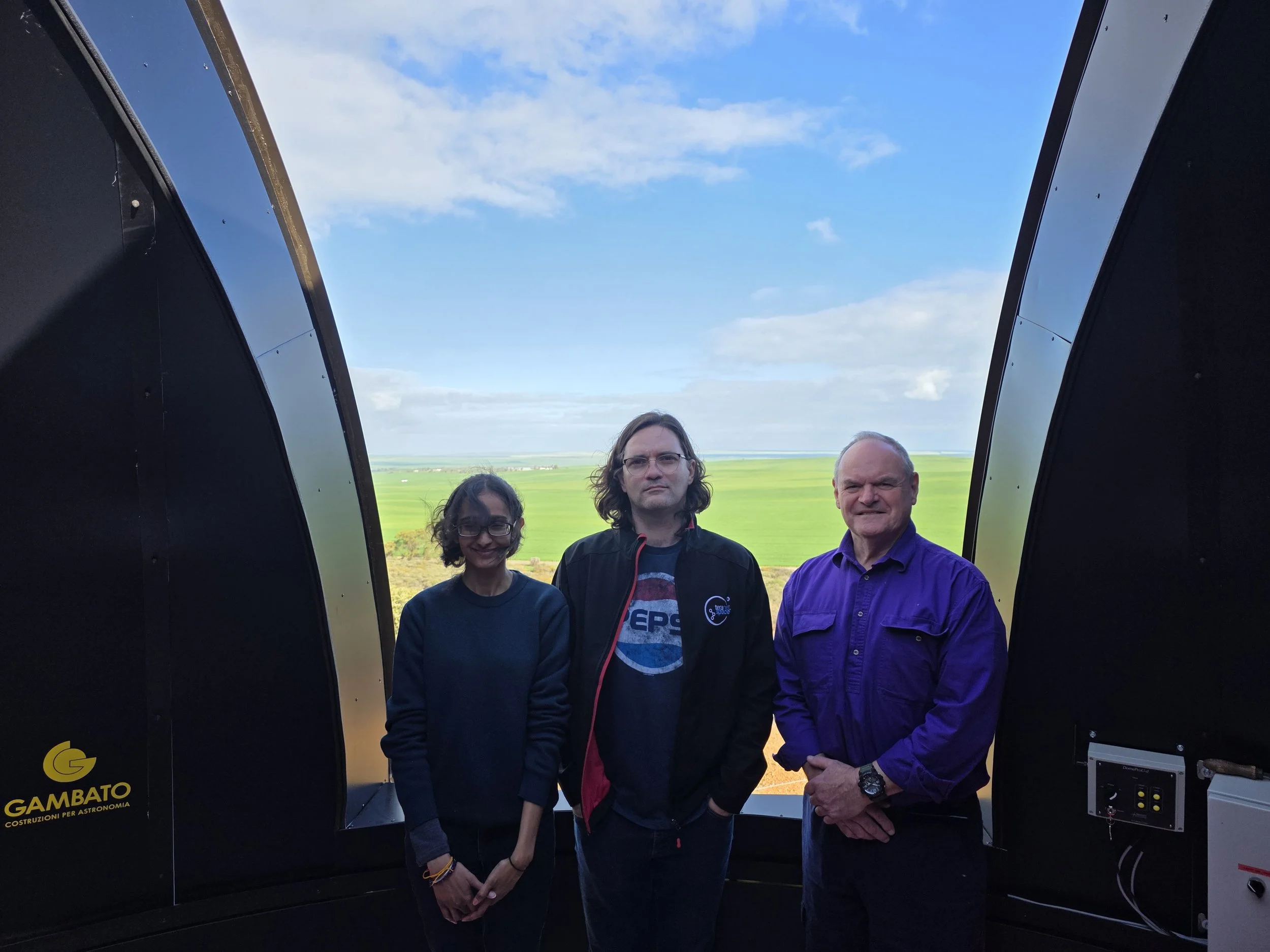Building TeraNet-2: Engineering Challenges and Triumphs in Western Australia’s Optical Ground Station Network
Published October 10 2025
By Dr Graeme G. Wren & Aliesha Aden
TN-2 at the Yarragadee Geodetic Observatory. Source: Michael Goh and Aliesha Aden
With the completion of TeraNet-2 (TN-2) at Yarragadee Geodetic Observatory in WA’s Midwest, I can look back on the challenges and milestones that turned a bare patch of red dirt into a key piece in TeraNet’s advanced optical ground station network right in our backyard.
For me, leading this build was about problem-solving in real-time to balance precision engineering with the realities of working in a remote environment, right from first survey to the end of construction.
TeraNet Team marking the TN-2 site. Source: TeraNet
Designing for precision and dual utility
From day one, TN-2 was designed with two goals in mind: First, to deliver high-speed, secure optical communications with satellites from low Earth orbit and beyond. Second, to meet the stringent requirements of geodetic satellite laser ranging.
Achieving both meant we couldn’t compromise on foundations or alignment. Every element, from geotechnical investigations to concrete design, through to equipment mounting, thermal control, and alignment workflows, was all planned around the tolerances required for geodesy.
The result? A station that supports today’s laser-communications and timing needs while also being capable of contributing to international projects in the future.
Aerial view of TN-2 at the Yarragadee Geodetic Observatory. Source: Michael Goh
Overcoming construction challenges
At the heart of TN-2 is a PWI RC700 70-cm telescope, housed in a 4.6-metre dome constructed by Gambato (Yes... that’s quite a mouthful in itself!). Installing this system in regional WA was no simple task. Long supply chains, harsh weather, and the ever-present dust shaped our construction sequencing. We made sure the dome and environment controls were fully operational before bringing high-value optics on site.
To maintain a clean and stable link with fast-moving objects, TN-2 integrates HartSCI’s ClearSky adaptive optics system. This system corrects for atmospheric turbulence in real time, allowing efficient coupling into single-mode fibre. Combined with laser safety systems and a purpose-built optics laboratory and control room, the station was engineered for both precision and long-term operability.
Milestones that mattered
Progress was measured by a few key milestones:
Civil works and geotechnical surveys, securing the stability needed for dual utility.
Dome assembly and environmental sealing, protecting sensitive optics.
Integration of the telescope, adaptive optics, and safety systems, where precision alignment was critical.
Each stage came with its own challenges, from timing international deliveries, to coordinating local contractors. Seeing those pieces come together into a fully operational facility was one of the most rewarding parts of the project.
(Left) How TeraNet optimises communication in space. (Right) Map of Western Australia showing the location of TeraNet OGS nodes. Source: TeraNet.
Anchoring a resilient network
With the support of institutional partners and industry collaborators, TN-2 is more than a stand-alone site. It has become the Midwest anchor in the wider TeraNet optical ground station network, operating alongside TN-1 at UWA and TN-3, which is a world-first fully mobile optical ground station.
Together, these facilities form the first interconnected optical ground station network in the southern hemisphere, delivering secure, high-bandwidth communications.
Pictured (Left to Right) TeraNet team members Amrita Gill, Shane Walsh and Graeme Wren
Looking back
For Western Australia, TN-2 demonstrates that world-class optical infrastructure can be built and operated in regional Australia. For me personally, it was a chance to lead a project that pushed the boundaries of engineering and proved what can be achieved when determination, collaboration, and precision come together.
Watching TN-2 fire up for the first time, felt like more than a technical milestone. It was proof that a world-class capability could rise from WA’s red dirt and stand ready to connect us to the future of space.
Acknowledgement of Project Partners
TeraNet is led by The University of Western Australia (UWA), with project partners Thales Australia, Thales Alenia Space, and Geoscience Australia. The project also receives vital collaboration from DLR (Germany), CNES (France), ESA (Europe), AARNet, and Fugro SpAARC.
The project was delivered under the Australian Space Agency’s Moon to Mars Demonstrator Mission program, with additional investment from the WA Government and The University of Western Australia (UWA). The project is hosted at the International Centre for Radio Astronomy Research and is supported by the International Space Centre at UWA.











